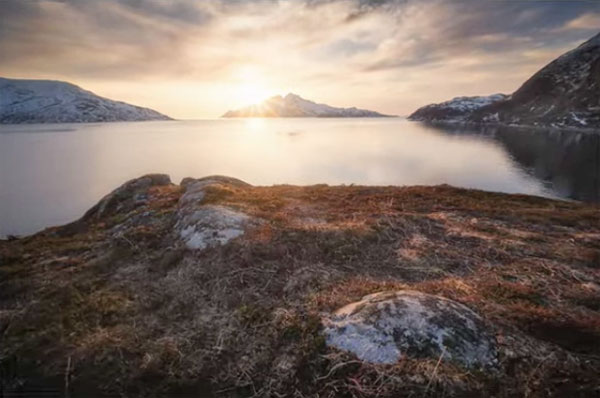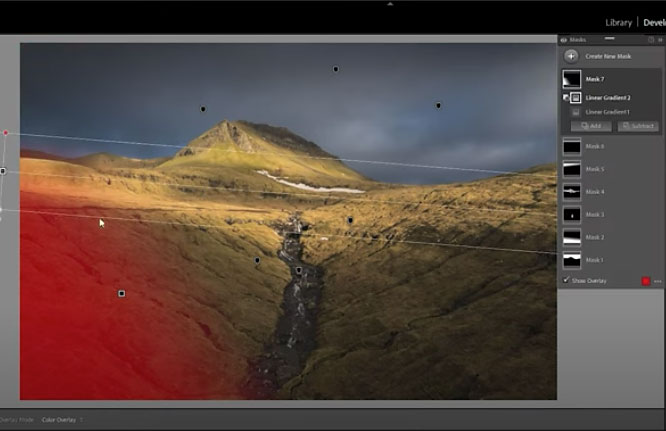5 things interior designers say you should remove from your kitchen to make it feel bigger
Taking items away is often the key to making your home feel more spacious
This morning we posted a straightforward Lightroom tutorial explaining how easy it is to use Lightroom Masks for landscape photos with maximum impact. Now it’s time for six pro tips that will enable you to get the job done in the camera.
Remontheroad (think Remi on the Road) is a new YouTube channel devoted to helping outdoor photographers shoot better travel and landscape images. And while there’s no magical recipe for capturing perfect photos under all conditions, French pro Remi Bergougroux always has some great advice.
Bergougroux has been passionate about photography ever since receiving his first camera at the age of 10, and he’s generous about sharing the secrets to his success now that he’s a working pro. In this episode he provides six basic tips that he says will “instantly improve your landscape photography” near home or on the road.

This lesson is intended for photographers of all skill levels, with Bergougroux explaining why “beginners tend to miss what’s important,” while advanced photographers “sometimes get stuck in a routine.” In other words, there are ways for all of us to take our outdoor photography to the next level.
The video kicks off with some useful inspiration, and a bit of self-reflection and caution as Bergougroux uses his imagery to illustrate how his work has evolved through practice, study, and experimentation. As he says, “I want to help you save time by not making the same mistakes I did over the years.”
Bergougroux then turns to gear talk as you follow him hike along the shore of beautiful Kvaloya Island in Northern Norway, and there’s a list of the equipment he uses in the description beneath the video. As you’ll see, he recommends carrying an array of essential equipment when shooting in the field.

You’ll learn why you don’t have to be in an exotic location like Kvaloya to capture beautiful imagery. More important is understanding how to choose and compose whatever you confront. He has some very helpful tips for arriving at a great composition—what Bergougroux calls his “most important advice.
There’s also a discussion of using light in the most advantageous manner possible, and why it’s important to carefully avoid “over-editing” your imagery if you really want to up your game.
You can find more helpful shooting and editing tips on Bergougroux’ YouTube channel. And if you missed this morning’s editing tutorial mentioned above, be sure to take a look.
If your landscape photos lack the impact, color and drama you envision—and you’re not sure what to do—the tutorial below from the PHLOG Photography YouTube channel is just what you need. In this quick video you’ll learn a straightforward Lightroom technique for transforming good images into great ones.
Instructor Christian Mohrle is a professional landscape photographer and image-editing expert. Today he demonstrates simple masking techniques, beginning with this promise: “This is how you can shape the light of your photos in Lightroom to make them POP!”
We recommend downloading his sample Raw file with the link beneath the video so you can follow along as the steps are explained. Mohrle uses “a ton of masks” to achieve a dramatic contrast-rich result. Don’t let that intimidate you, through, because this method doesn’t require super-advanced skills.

Mohrle begins with several quick adjustments to set up a base image for what follows; a preliminary step he says is necessary before you can effectively shape light. He first shifts the profile from Adobe Color to Adobe Standard, and then adjusts White Balance to warm up the shot, carefully drops exposure, and brings up the blacks for more details in the darkest areas of the photo.
Mohrle also adds clarity and texture for a sharper look. The last initial step is increasing Vibrance to pump up the color. Take look at the before/after images and you’ll notice a significant difference.
Now it’s time for the real magic to begin by opening Lightroom’s Masking panel. As we mentioned at the onset, Mohrle use a variety of masks to make selective adjustments to different portions of the scene.

The benefit of this approach, apart from the compelling transformation, is that you’ll learn how easy it is to employ most of the Masking and Gradient tools available in Lightroom to fine-tune color, contrast, exposure and more to fix whatever was missing in the images you found disappointing in the past.
Once the masking is complete, the edit concludes with simple color grading and a bit more sharpening. Mohrle’s popular YouTube channel is full of lessons on editing landscape photos to perfection, so be sure to pay a visit.
We also suggest watching the earlier tutorial we posted from another image-processing expert, explaining a fast and precise editing technique for blurring distracting backgrounds in outdoor photographs.
